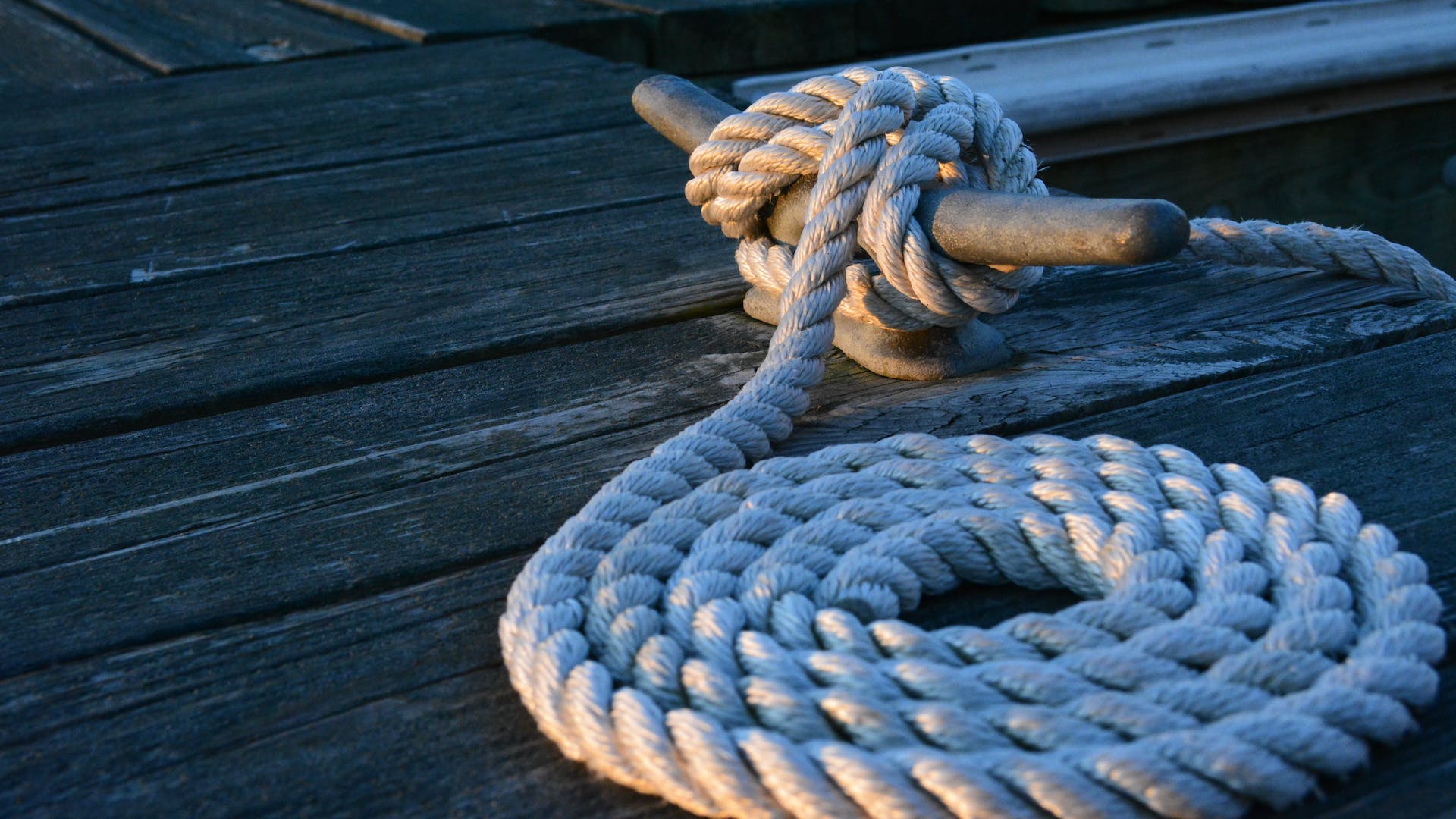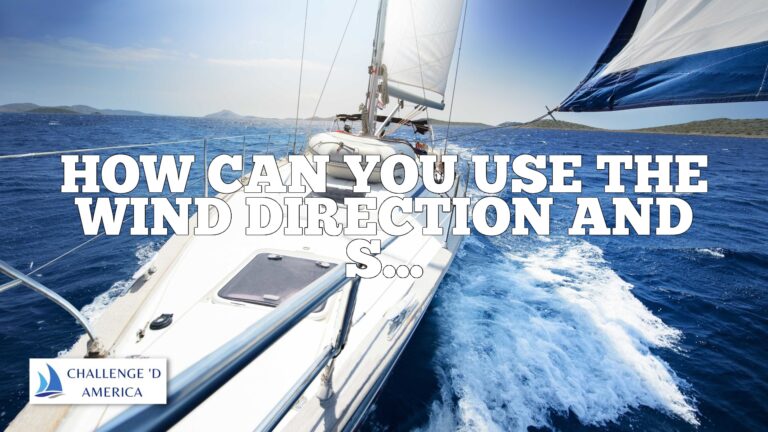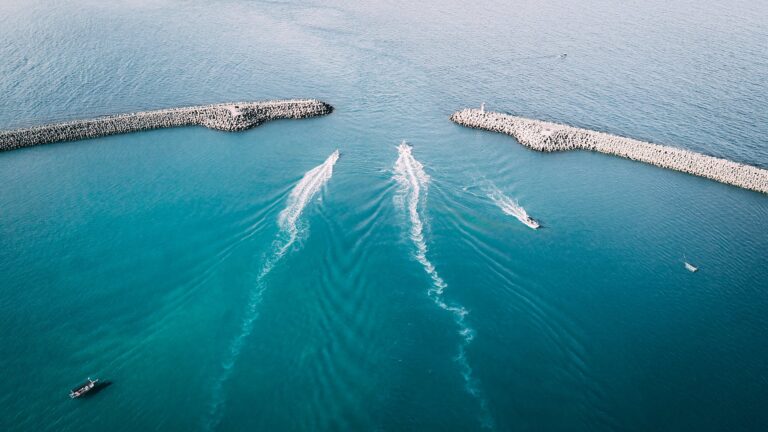How Many Knots Is Too Much For Sailing?
Sailing can be an incredibly rewarding and enjoyable activity, but it can also be a dangerous one if the wrong conditions are present on the water.
One of the most important things to consider when preparing to sail is how much wind there is expected to be, measured by knots (kts).
In this article, we’ll explore what constitutes too much wind for sailing, any associated dangers, and how to best assess the weather before heading out on your boat.
What is a Knot?
A knot (kt) is a unit of speed that measures one nautical mile per hour (1 nm/hr), and it’s commonly used to measure both wind speed and water currents when sailing.
A nautical mile is different from a standard mile and is equal to 1.15 standard miles or 1,852 meters per hour – nearly twice as long as a land-based mile! In other words, when you hear someone say “20 knots” they mean that the wind speed or current speed is 20 nautical miles per hour (20 nm/hr).
How Is Wind Speed Measured in Knots?
Wind speed is usually measured by an anemometer and expressed in knots, or “kts,” which stands for kilometers per hour (km/h). The anemometer measures how fast air passes through it over a certain period of time, usually around 10 minutes, and then averages out the results into knots per hour (kts).
The higher the number of kts, the stronger and faster the wind is blowing, however, just because there’s a higher number doesn’t always mean it’s too much wind for sailing!
What Is Considered Too Windy For Sailing?
Generally speaking, anything over 20 knots can be too much to handle for many sailors, especially if they’re in a gusty area with rapidly changing winds that could catch them off guard while they’re out on the water.
More experienced sailors may decide to head out in up to 25 knots (gusting 30-32), but no matter what level you’re at as a sailor it’s best not to go out if you feel uncomfortable with anything above 20 kts or if there are any signs of extreme weather like thunderstorms or hail coming soon after your trip begins.
The Dangers of Sailing In High Winds
It’s no secret that high winds can make sailing difficult and even dangerous if you’re not prepared – but what exactly makes it so risky?
High winds create more powerful waves which could cause your boat to capsize if not handled properly, strong gusts can also make it hard to control your boat’s sails and course due to their sudden changes in direction, sharp turns can cause dangerous broaching events if done incorrectly, and finally, high winds often come with choppy waters which create difficulties when docking or anchoring your boat safely near shore when returning from your trip.
All these factors combined make sailing in high winds something that should only be attempted by experienced sailors who know what they’re doing and have all safety protocols covered before heading out on their vessel.
How To Assess The Weather Before Sailing
It’s always important for sailors to stay up-to-date with local weather conditions before heading out on their boats – especially when strong winds are predicted! To begin assessing whether conditions are safe enough for your voyage start by checking online forecasts from reliable sources such as the National Weather Service or Windy, look at both current forecasts as well as those projected several days out so you know what you might expect while you’re on the water, then check local data like tide charts and marine warnings, finally consult with other experienced sailors who may have more accurate information about the area where you plan on sailing since local knowledge can go a long way when making decisions about safety while boating!
Tips For Sailing In High Winds
If you’ve assessed all factors carefully and determined that it’s safe enough to sail in higher than usual winds then here are some tips that will help make sure your voyage goes smoothly: always wear life jackets at all times, use reefing lines on sails so they don’t get overpowered by strong gusts, carry extra anchor lines just in case you need them quickly during unexpected events, keep an eye on all sails at all times so they don’t get overpowered by sudden gusts, be ready for quick course changes due to shifting winds, monitor engine performance carefully since higher than usual speeds could put extra strain on its components, finally stay alert at all times so unexpected events don’t catch you off guard!
Conclusion
Sailing in higher than normal winds can be made safe with proper preparation and knowledge – but even then it should only be attempted by experienced sailors who know what they’re doing! Before venturing out into stronger than usual conditions take time to assess current forecasts as well as those projected several days ahead online from reliable sources like Windy or The National Weather Service – then consult with other experienced sailors who may have more accurate information about the area where you plan on going – finally follow all safety protocols like wearing life jackets at all times while also being ready for quick course changes due to shifting winds! With these tips in mind anyone looking forward to setting sail will know exactly how many knots are too much for their next voyage!
FAQs
How do I best assess weather conditions prior to my voyage?
Check online forecasts from reliable sources such as The National Weather Service or Windy.windy(com/), look at both current forecasts as well as those projected several days out so you know what you might expect while you’re on the water, then check local data like tide charts and marine warnings, finally consult with other experienced sailors who may have more accurate information about the area where you plan on going – this will help give you more confidence when determining whether it’s safe enough for your voyage or not!
What should I do if I encounter particularly strong gusts while I’m out sailing?
Use reefing lines on sails so they don’t get overpowered by strong gusts, keep an eye on all sails at all times so they don’t get overpowered by sudden gusts, be ready for quick course changes due to shifting winds – this means having extra anchor lines just incase one breaks during unexpected events, finally monitor engine performance carefully since higher than usual speeds could put extra strain on its components – this will help ensure an enjoyable yet safe voyage back onto shore after encountering strong gusts during your trip!
Is there any additional gear I should bring along when expecting higher than normal winds during my voyage?
Always wear life jackets at all times – this goes without saying but its importance cannot be overstated, carry extra anchor lines just incase one breaks during unexpected events – this will come in handy should something happen that requires anchoring quickly while still far away from shore, consider bringing along heavier duty ropes since stronger than normal forces could break lighter ones easily – having multiple backups will ensure smooth transitioning between ports no matter what type of weather occurs during your trip!




![sailing-knots-747-speed How Many Knots Can a 747 Go?[Editing Required]](https://challengedamerica.org/wp-content/uploads/2023/02/sailing-knots-747-speed-768x432.jpg)


